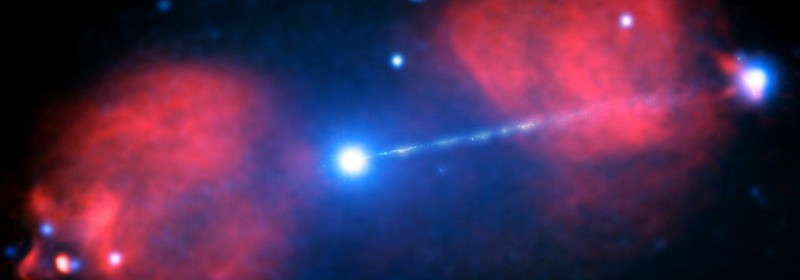A super-massive black hole is shooting X-rays across galaxies

Over 15 years of observational data collected by NASA’s Chandra X-Ray Observatory and the Australia Telescope Compact Array have given us a composite image of a tremendous cosmic blast. The image depicts an x-ray beam (blue) casts away from the black hole sitting at the center of Pictor A, a galaxy located 500 million light years from Earth. Other prominent features include a “radio lobe” (red), where the x-ray beam is making it’s way into the surrounding interstellar gas, and a bright “hotspot” at the leading edge of the stream, which is caused by supersonic shock waves.
This may seem like alarming news. But NASA assures us that intergalactic laser blasts are a perfectly normal and expected result of living in a universe filled with massive invisible objects that continually devour light and matter.
When cosmic material makes it’s way towards the event horizon of a black hole, it releases a huge amount of gravitational energy. Every now and again, some of this energy is released in a stream of particles that blast off into intergalactic space at nearly the speed of light. The closest black hole to Earth, Sagittarius A*, has had similar outbursts over time, including one six million years ago which could have impacted life on the lovely planet we call home.
So rest assured this is just a normal, healthy outburst from a massive celestial object that devours stars in a galaxy far far away.
Source: NASA

 Print
Print